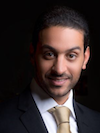by Sulaiman T. Al-Abduljader

The seemingly paradoxical impact of discretion in Sovereign Wealth Funds (SWFs) have long propelled academics and researchers towards creative means of gathering information about holdings, acquisitions and ownership characteristics. Yet, many transactions have appeared in the headlines or some form of mandatory disclosure which often surface due to the sheer size of the transactions in question. SWFs still prefer discretion, though to various degrees depending on the country, for smaller transactions which are usually not made public.
The Santiago Principles in the 2008 international SWF forum aimed to promote ‘transparency, good governance, accountability and prudent investment practices’. Less than a year later, the Kuwait Declaration was signed by several major SWFs, based on the Santiago Principles and creating a ‘non-binding’ voluntary group within which they could share views and exchange information.
After a decade of these audacious (at least from the heretofore conservative standpoint of SWFs) endeavours, are we satisfied with the current level of ‘transparency’? I am yet to find someone who is. Meanwhile, it is hard to imagine anything more delicate for any government, with the exception of security and defence, than its handling of finances. So, what hopes exist in pushing for full disclosure? Or, more pertinently, is it appropriate to do so?
The topic of SWF activities has been, and will remain, the subject of extensive media and academic attention for obvious reasons. Firstly, the aggregate assets under management (AUM) currently stands at US$7.8 trillion from a mere eighty-one funds – no wonder that in global finance circles they are referred to as the ‘usual suspects’.
Secondly, information on decision-making, strategic asset allocation and the investment selection process is a topic of much interest. Although it certainly differs from one fund to another, research has shown the decision to invest and divest to be the result of calculations balancing pure merit on valuation, and embedded strategic and political objectives. Questions can be asked regarding the appropriateness of such considerations and justifications abound from each side of the argument.
Thirdly, we have witnessed shifting grounds in the investment landscape ever since the international community’s official commitment in 2015 towards the United Nations Sustainable Development Goals (SDGs). 193 governments, including those with the largest SWFs, signed, announcing their commitment towards specific financial, social and environmental objectives aimed to be achieved by 2030. The SDGs are much more far-reaching than the previous Millennium Development Goals and urge governments and corporations to transform the way they go about doing business. Adding on top of that the effects of disruptive technologies and artificial intelligence, interest in the role of SWFs, though they could become game-changing, has been pushed to the margins.
For all that, it is worth highlighting Middle Eastern SWFs for two main reasons: Firstly, they represent half of the top fifteen SWFs in the world with an aggregate size of almost US$3 trillion and secondly, they are probably the most ‘discrete’ as compared with their closest counterparts such as in Norway, Singapore and China, though they do have varying political structures, demographics and potential.
Recently, UN agencies – along with the World Bank and some notable foundations – have played a pivotal role in mobilising private practice towards ‘responsible business’ in order to successfully achieve the SDGs. Some specialised platforms have emerged such as the UN Global Compact, the Sustainable Stock Exchange Initiative and the UN Principles of Responsible Investing (PRI), with 1700 signatories managing US$68 trillion in AUM. A new breed of participants labelled ‘impact investors’ and ‘social entrepreneurs and philanthropists’ have been creating a buzz in recent years. Most major banks and financial institutions now have dedicated teams looking into streamlining Environment Social Governance (ESG) integration.
However, it seems Middle Eastern SWFs are not yet on board with this new trend, lessening its global impact considerably. Despite some recent formations of working groups within the SWF community, for instance the One Planet SWF framework, no tangible commitment towards the aforementioned global principle-based networks has been seen. This hesitation, so far as can be seen, stems from the disparity of expectations among Middle Eastern SWFs. The more relevant these frameworks are the more valuable they becomes. Nonetheless, relevance can only occur if we are able to identify and target SWFs’ pressing issues beyond the standard reporting currently imposed on corporations.
Perhaps what is needed in the meantime is instead a customised framework that could move from the existing unmeasured ‘negative screening’ process to quantifiable principle-driven guidelines, with optional disclosures to aggregate the SWF’s social and environmental impact.
Most SWFs in the Middle East have engaged in negative screening by avoiding sectors such as gambling and alcohol since their inception, before terms such as ‘faith-based’, ‘ethical’ or ‘socially-responsible’ investing even appeared. Therefore, positive impact does exist. But the key point is that any government would wish to convey their positive social and environmental impact in a situation where they can do so with the least amount of vulnerability or ‘unwelcome exposure’. Middle Eastern SWFs can capitalise on this goodwill to improve their respective countries’ SDG ranking and progressively build their engagement towards contributing to the US$2.4 trillion financing gap estimated by the Building and Sustainable Commission over the next decade, and finetune their investment policies towards reaching their ultimate potential: a force that can contribute to and transform the global movement of sustainability with a subtle and balanced approach.
Sulaiman T. Al-Abduljader is a Visiting Fellow at the Centre of International Studies (CIS) at the London School of Economics and an Assistant Professor of Finance at Gulf University for Science and Technology (GUST).
is a Visiting Fellow at the Centre of International Studies (CIS) at the London School of Economics and an Assistant Professor of Finance at Gulf University for Science and Technology (GUST).







Proud of you my dear husbend.